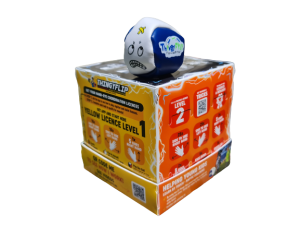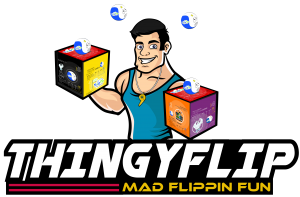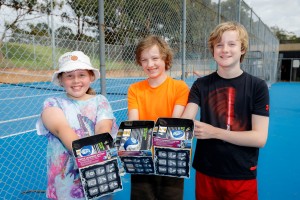Sydney, New South Wales May 31, 2023 (Issuewire.com) - The Thingy Flip: Combating Device Distractions for
Education and Mental Health
The Thingy Flip Hyper Eye-Hand Coordination Program:
A Solution to Device Distractions and its Impact on Education and Mental Health
Introduction
In today's digital age, devices have become an integral part of our lives. From smartphones to tablets and laptops, we rely on these devices for communication, entertainment, and accessing information. However, the excessive use of devices has also brought along several negative consequences. One significant issue is the distraction they pose, hindering our engagement in physical activities and brain exercises that are vital for our overall well-being, especially eye-hand coordination and cognitive function. This article explores the adverse effects of device distractions on education and mental health, and introduces the Thingy Flip Hyper Eye-Hand Coordination Program as a potential solution.
The Impact of Device Distractions on Education
Devices have transformed the way we learn, with online platforms providing access to a vast amount of information. However, they have also introduced distractions that can adversely affect educational outcomes. When students constantly switch between educational tasks and social media platforms or games, their focus and concentration suffer. This impairs their ability to retain information and hampers the learning process. Additionally, prolonged device use has been linked to decreased academic performance, as students spend more time on non-educational activities instead of studying or completing assignments.
Moreover, the sedentary nature of device use contributes to a more sedentary lifestyle, reducing opportunities for physical exercise. Regular exercise has been proven to enhance cognitive abilities and memory retention, meaning the lack of physical activity resulting from device distractions can indirectly impact academic performance.
The Impact of Device Distractions on Mental Health
Excessive device use has also been associated with various mental health issues. Social media platforms, in particular, have been linked to increased rates of anxiety, depression, and low self-esteem. Constant exposure to curated and idealized versions of others' lives can lead to negative social comparisons, fostering feelings of inadequacy and diminishing overall mental well-being.
Moreover, the addictive nature of devices and the constant need for stimulation can disrupt sleep patterns, leading to sleep deprivation. Lack of proper sleep has detrimental effects on mental health, resulting in irritability, difficulty concentrating, and increased stress levels. Additionally, spending excessive time on devices often leads to a sedentary lifestyle, further exacerbating mental health concerns such as obesity and related conditions.
Introducing the Thingy Flip Hyper Eye-Hand Coordination Program
Recognizing the need to combat the negative consequences of device distractions, the Thingy Flip Hyper Eye-Hand Coordination Program offers a promising solution. This innovative program focuses on enhancing eye-hand coordination and cognitive function through a fun and engaging activity for single users, families, groups or teams.
The Thingy Flip is a handheld device specially designed to improve eye-hand coordination by challenging the user to toss and catch it on ten different sides of their hand. This seemingly simple activity activates and strengthens various neural pathways, creating new connections in the brain. Just like playing two sets of tennis, this program provides a comprehensive workout for the brain, involving multiple shots ( Eye hand coordination ) and movements.
One of the key advantages of the Thingy Flip program is its time efficiency. While a traditional 2 set tennis game may take up to 90 minutes and provide around 570 shots, the Thingy Flip allows users to achieve 600 shots within just 10 minutes. This makes it a convenient and effective option for those with busy schedules who still want to reap the benefits of physical and mental exercise.
Furthermore, the Thingy Flip Hyper Eye-Hand Coordination Program is designed to be an essential tool for maintaining brain health in the future. Similar to how losing a toothbrush would prompt immediate replacement, losing a Thingy Flip should be viewed as a priority, emphasizing the importance of regular engagement with the program for long-term cognitive well-being.
In an era dominated by digital devices, it is crucial to recognize the detrimental effects they can have on our physical and mental well-being. Device distractions not only hinder our engagement in physical activities but also impede important brain exercises, such as eye-hand coordination. These distractions have significant implications for education and mental health, affecting academic performance and contributing to various mental health concerns.
Fortunately, the Thingy Flip Hyper Eye-Hand Coordination Program offers a promising solution to counteract the negative impact of device distractions. By providing a fun and engaging activity, the program promotes eye-hand coordination and cognitive function. The Thingy Flip, a handheld device designed specifically for this purpose, challenges users to toss and catch it on ten different sides of their hand. This seemingly simple activity activates and strengthens neural pathways, creating new connections in the brain.
One of the program's key advantages is its time efficiency. Traditional sports like tennis can be time-consuming, requiring significant dedication. However, the Thingy Flip program allows individuals to achieve the equivalent of 600 shots in just 10 minutes, making it an accessible and convenient option for busy individuals seeking to improve their physical and mental capabilities.
Furthermore, the Thingy Flip Hyper Eye-Hand Coordination Program aims to be an integral part of maintaining brain health in the future. Similar to the immediate replacement of a lost toothbrush, losing a Thingy Flip should be viewed as a priority, highlighting the importance of regular engagement with the program for long-term cognitive well-being.
By investing in a Thingy Flip and participating in the program, individuals can counteract the negative effects of device distractions. The program provides an opportunity to enhance eye-hand coordination, stimulate cognitive abilities, and foster a healthier lifestyle. Through consistent use, users can develop and strengthen vital neural pathways, improving their focus, concentration, and overall mental acuity.
Moreover, incorporating the Thingy Flip Hyper Eye-Hand Coordination Program into educational settings can yield substantial benefits. Educators can introduce this engaging activity as part of physical education programs, promoting not only physical fitness but also cognitive development. By encouraging students to participate in activities that challenge their eye-hand coordination, schools can mitigate the negative impact of device distractions on academic performance and promote holistic development.
In conclusion, the excessive use of devices and the distractions they bring have significant consequences for education and mental health. However, the Thingy Flip Hyper Eye-Hand Coordination Program offers a solution to combat these issues. By investing in a Thingy Flip and engaging in the program, individuals can enhance their eye-hand coordination, stimulate their brain, and counteract the negative effects of device distractions. As we look towards the future, prioritizing brain health through programs like the Thingy Flip will become as essential as any other self-care routine. So, take the step now and invest in a Thingy Flip to support your brain's health and unlock your full potential.
Eye-hand coordination refers to the ability to use visual information to guide the movements of our hands and fingers. It plays a crucial role in various human activities, including sports, daily tasks, and fine motor skills. Tossing and catching balls using the palms of our hands is one activity that has helped in the brain development of mankind by enhancing this coordination.
When we engage in the activity of tossing and catching balls, several key processes occur simultaneously, involving the brain, eyes, and hands. Here's a breakdown of how this activity contributes to brain development:
Visual Perception: Tossing and catching balls require us to visually track the ball's trajectory, speed, and direction. Our eyes send this information to the brain, which processes it and interprets the visual cues. This process enhances visual perception and develops our ability to judge distances and motion.
Hand-Eye Coordination: As we track the ball with our eyes, our brain simultaneously sends signals to our hands, instructing them to move and position themselves to catch the ball accurately. The brain's ability to coordinate these movements with visual information strengthens the connection between the visual and motor areas, improving hand-eye coordination.
Motor Skills: Catching a ball involves complex motor skills, including hand positioning, grip adjustment, and finger dexterity. Regularly practicing these movements refines our fine motor skills and strengthens the neural connections between the brain and muscles involved. This development is not limited to the hand muscles but also extends to the larger muscle groups involved in arm movements.
Proprioception: Tossing and catching balls engage our proprioceptive senses, which provide feedback about body position and movement. When we catch a ball, our brain receives continuous feedback about the position and orientation of our hands in space. This feedback is crucial for coordinating our movements and making adjustments to catch the ball successfully.
Cognitive Processing: The activity of tossing and catching balls requires us to process and react to visual information quickly. This rapid cognitive processing involves attention, decision-making, and anticipation. Regularly engaging in this activity challenges the brain's cognitive abilities, improving reaction times, concentration, and overall cognitive function.
By consistently practicing tossing and catching balls, individuals can improve their hand-eye coordination, motor skills, proprioception, and cognitive processing. These improvements contribute to the overall development and refinement of neural connections in the brain. The brain's plasticity allows it to adapt and rewire itself based on the experiences and activities it engages in, leading to enhanced brain development in the context of eye-hand coordination.
The effects of tossing and catching on 10 sides of our hands
The exercise involving the Thingy Flip, a box with a handle in the middle, and the task of tossing and catching balls on its 10 different sides has several effects on the brain when performed regularly, akin to a habitual activity like cleaning your teeth. Here are the significant effects it can have:
Sensory Integration: Tossing and catching balls on multiple sides of the Thingy Flip engages various sensory inputs, including visual, proprioceptive (body position and movement), and tactile (touch) feedback. The brain integrates these sensory inputs, enhancing its ability to process and interpret information from different sources simultaneously.
Hand-Eye Coordination: The complex nature of the exercise requires precise hand-eye coordination. The brain strengthens the connections between the visual and motor areas, improving the ability to synchronize the movements of the hands with the visual cues of the ball's trajectory and the desired landing side. This leads to enhanced hand-eye coordination and motor control.
Motor Planning and Execution: Tossing and catching balls on different sides of the Thingy Flip involves intricate motor planning and execution. The brain is constantly engaged in the process of strategizing the toss, adjusting the grip, and coordinating the timing of hand movements. With regular practice, the brain becomes more efficient in planning and executing complex motor sequences.
Cognitive Flexibility: The exercise requires quick decision-making and adaptability. The user must choose the landing side and adjust the positioning of the Thingy Flip accordingly. This challenges the brain's cognitive flexibility, allowing it to switch between different mental sets and adjust strategies based on the changing circumstances. Regular practice promotes cognitive flexibility and improves the brain's ability to adapt and respond to new situations.
Concentration and Focus: Tossing and catching balls on multiple sides of the Thingy Flip demands sustained concentration and focus. The brain strengthens its attentional processes as it maintains focus on the ball's trajectory, adjusts grip and speed, and ensures the box is level for the ball to land properly. This exercise improves concentration skills and helps in sustaining attention for longer durations.
Neuroplasticity: Regularly engaging in the exercise promotes neuroplasticity, the brain's ability to reorganize itself and form new neural connections. The brain's plasticity allows it to adapt and refine its neural pathways, reinforcing the connections between the visual, motor, and cognitive areas involved in the task. This leads to improved overall brain function and enhances learning and memory abilities.
Stress Relief and Emotional Well-being: Physical activities that require focus and coordination, such as the Thingy Flip exercise, have been linked to stress reduction and enhanced emotional well-being. Engaging in the exercise releases endorphins, which are natural mood elevators. Regular practice can help alleviate stress, improve mood, and contribute to a sense of achievement and satisfaction.
In summary, regularly practicing the Thingy Flip exercise, involving tossing and catching balls on its multiple sides, has a range of positive effects on the brain. These effects include enhanced sensory integration, improved hand-eye coordination, refined motor planning and execution, increased cognitive flexibility, strengthened concentration and focus, neuroplasticity, and potential stress relief. By incorporating this exercise into a routine, individuals can harness these benefits and further promote their brain's development and overall cognitive abilities.
For more information about the Thingy Flip Hyper Eye-Hand Coordination Program, visit www.thingyflip.com
Media Contact
Thingy Flip dominic@thingyflip.com Dominic See 3/69 Burraneer Bay rd Cronulla http://www.thingyflip.com












